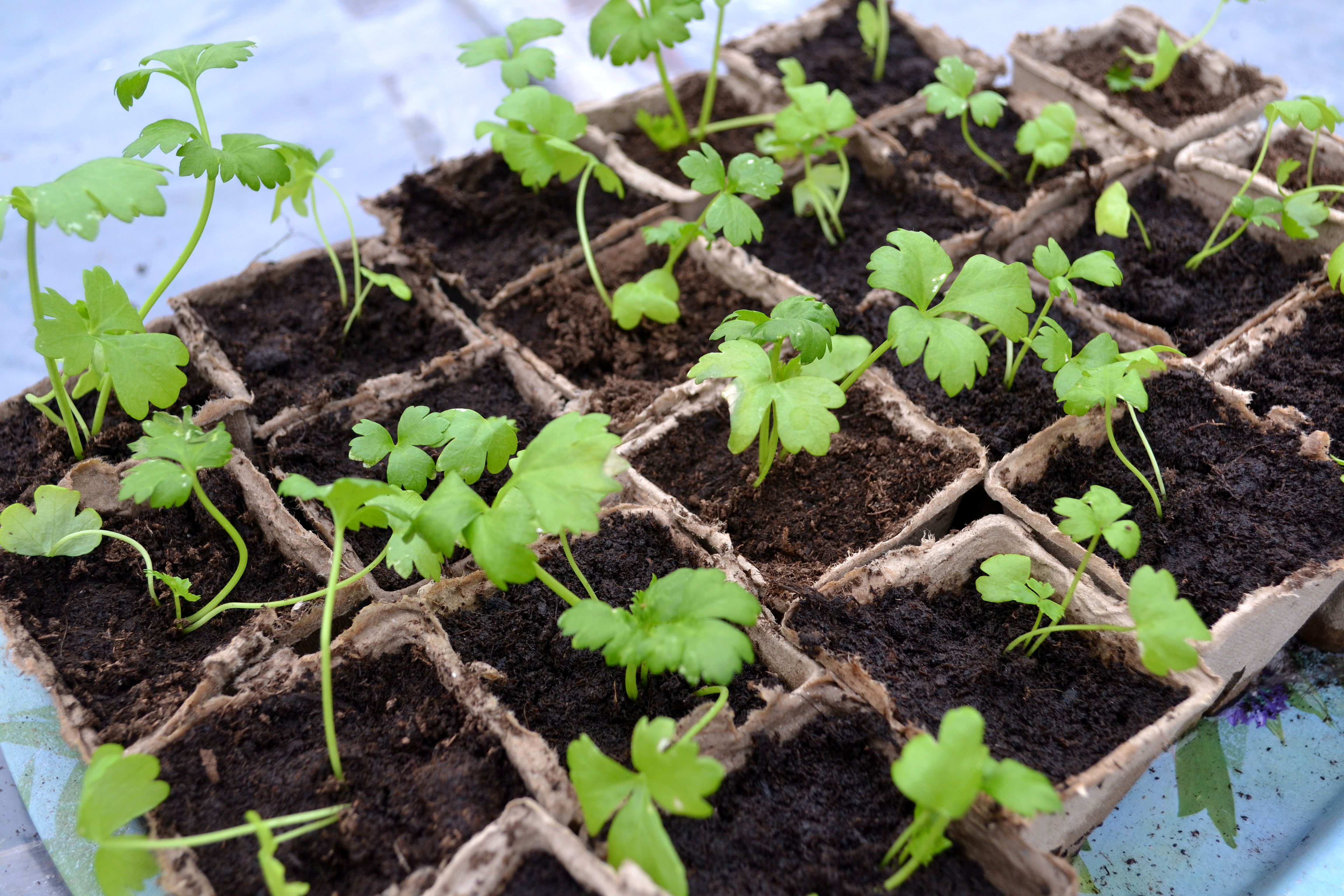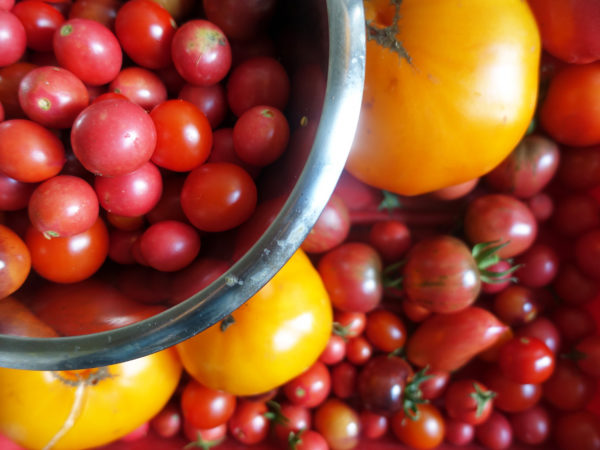Growing light-germinating seeds – my 6 favorites
Plenty of vegetables have light-germinating seeds, perhaps more than you would think! These are my 6 favorite vegetables with light-germinating seeds.

Newly replanted celery root plants. The picture was taken in February 2016.
It's time to sow! I have a handful of tiny little celery seeds in my hand and I plan on sowing them the same way I always do - without covering them with a layer of soil. Some seeds grow better when they are exposed to the light and should not be covered. But how do you know which seeds are like this?
More content from Sara on Youtube: Sara's Kitchen Garden
A good benchmark is that tiny seeds should not go too deep into the soil. The really tiny seeds should just be lightly pressed into the soil. That's enough. No soil on top. Here are my 6 favorite vegetables with light-germinating seeds:
Celery root
This root vegetable needs some time to produce fully developed roots. That's why you should sow your seeds early in the year. I do my first sowing in January, I sow them in a trough. I keep the sowing under a grow light and on a heat mat. It usually only takes a week or so before the seeds germinate.
Celery
Sow the seeds the same way you sowed the celery root seeds. I really love this vegetable and its tender stalks! You can use it in so many dishes and it looks beautiful in the garden too. I especially like the red-stalked celery varieties.
Purslane
This is my favorite vegetable in summer! The seeds are so tiny. When I pre-sprout them, I sow them in clusters of only a few seeds in each plug in my plug tray. If I decide to direct-sow them, I simply scatter the seeds in a watered row in one of the beds outside.
Winter purslane (Miner's lettuce)
Winter purslane is one of the hardiest leafy greens in my garden. You sow them just like the regular purslane seeds. Do it in plug trays to get individual plants that are easy to plant later. I sow winter purslane in summer to harvest later in winter.
Bell peppers
The flat and quite large pepper seeds grow very easily on top of moist soil. It's important to give the seeds heat from underneath and have the air nice and humid. Try growing the seeds in a greenhouse and use a heat mat to give the seeds an extra boost. I sow several seeds in each container, about an inch or so apart. Some cover their seeds with a very thin layer of soil to keep them from drying out. Read the information on the back of the seed packet to learn what's best for the variety you are interested in.
Basil
The seeds of this leafy green/herb are not that small and the information on the back of the seed packet might not always specify that they grow well in direct light. But I think they do! Since the seeds are a bit larger, you can observe them when they grow and it's a sight to see! I broadcast sow the seeds on top of the soil and push them down with my hand. After watering, it only takes a few hours (and even less if you have a heat mat) for the black seeds to change color. They turn purple. The seeds then develop little "tails" that start to move into the soil. After that, the stem and seed leaf starts to grow. I sow light-germinating basil both indoors under a grow light and in my greenhouse in summer.
More about basil: Planting basil cuttings
Instructions:
- Fill a trough with a layer of soil, around an inch or so.
- Flatten the soil.
- Scatter the seeds on top of the soil. Don't put them on top of each other but it doesn't matter if they are close together.
- Use your palm to put some pressure on the seeds.
- Put your sowings on a tray with water so the entire trough gets moist, the top layer of soil too.
- Cover the seeds with plastic or put it in a small greenhouse, put it on a heat mat indoors during winter.
I don't usually water the soil before I sow. It's easier to keep the seeds attached to the soil if it's not wet. If the soil is wet, the soil and the seeds will stick to your hand when you try to press them down.
I prefer watering light-germinating seeds from the bottom, simply because the seeds might wash away if you pour water on top.
Remember:
The seeds need to be moist all the time in order to start growing. If the soil suddenly gets dry when the seeds are in the germination process, the whole thing might fail. The seeds could dry out quite quickly though, especially if they are under a grow light. That's why I think it's a good idea to cover them in plastic to keep the moist in the soil. You could also use perlite or vermiculite (both of them are light-weight volcanic materials, you can buy them online or in some garden centers), sand or gravel. These are great since they let the light through so that the seeds can grow, but they still help keep the moist in the soil.
You can find out if your seeds are light-germinating or not by looking at the back of the seed packet. I noticed that many varieties that are not specified as light-germinating still might be though. A hasty sowing might be successful even though I didn't cover the seeds with soil, for example. If you for some reason want to do a no-pressure sowing like this I would recommend lettuce, lamb's lettuce, spinach, pea shoots, some bell pepper varieties, kale and some alliums that seem to grow without any luxury treatment or doing everything by the book.
This is how I sow pea shoots, it's so easy, and so tasty!
I'm just waiting for my sowings to start germinating now! It's extra exciting with the light-germinating seeds since it's so easy to follow the progress when they are on top of the soil. Good luck!
/Sara Bäckmo



Leave a Reply
You must be logged in to post a comment.